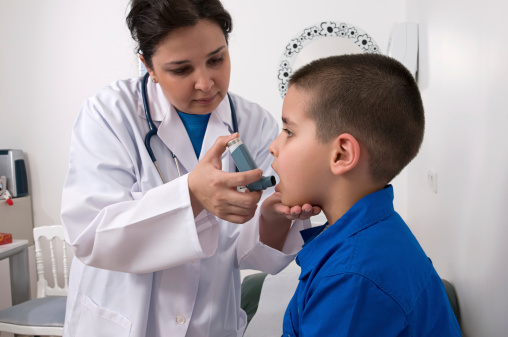
In many California school districts, nurses must be ready to jump in a car at a moment’s notice. One nurse often serves multiple schools, watching over hundreds if not more than a thousand students at a time.
“You have to be very organized and know who your students are,” said Linda Greene, resource nurse for San Diego Unified School District. “It takes a lot of concentration and dedication.”
Often required to spend time at multiple locations during the week, a school nurse’s duties include keeping tabs on students with food allergies, monitoring children on ventilators and ensuring that kids with diabetes get appropriate insulin injections.
In Greene’s district, she said officials aim to provide the equivalent of one full time nurse for at least every 1,500 students. That’s twice as many students as the Department of Health and Human Services recommends a school nurse should be responsible for.
“You’re basically the primary care provider for these students and you have to identify abnormalities before anyone else sees them,” said Greene, who’s been a school nurse for more than 40 years. “We have one school site with four students with diabetes that require frequent monitoring. It can be very dynamic.”
This might sound like an almost impossible job, in which it would be easy to overlook the needs of many children.
But more than half of all public school districts in California do not have even one full time nurse, according to research by the California State University at Sacramento School of Nursing.
Data from a soon-to-be published report, “School’s Role in Systems of Care for Children with Special Health Care Needs,” shows that 597 of 1,043, or 57 percent of school districts, have no full-time school nurse.
“Extreme variation exists across the state regarding the capacity of schools to provide health services for children with special health care needs,” said Dian Baker, a researcher at Cal State Sacramento who contributed to the study. “In some areas, the capacity is so low that the safety of these children may be at risk.”
Staffing levels for school nurses have long been a concern for many in education. However, recent data suggest access to school nurses in California recently took a significant turn for the worse after almost a decade of modest but steady improvement.
In 2012, the number of students in California per nurse jumped up to 2,815 from 2,035 in 2009, according to KidsData.org. Since 2009, that number had been dropping from about 2,401.
At the same time, the most recent statewide ratio masks eye-popping disparities. According to data from the School of Nursing at Cal State Sacramento, among school districts with nurses, excluding county offices of education, the number of students per nurse ranges from 180 to more than 20,000.
School nursing levels have suffered largely as a result of school districts making tough staffing decisions based on tight budgets.
As a stopgap measure, many districts have hired school health aids, as well as trained school staff to administer medications to students.
That has bothered some as the state has no requirements, standards or guidelines for training unlicensed personnel, such as principals, teachers and clerks.
“The quality of care is real questionable in the majority of schools in California,” said Linda Davis-Alldritt, spokeswoman for the California School Nurses Organization.“For the individual child who needs care it can be a crisis.”
At the same time, the need for nurses may be at an all-time high. While life expectancy for infants has increased over recent decades due to advances in medical technology, schools have seen a rise in a variety of conditions, including asthma, type-two diabetes and epilepsy.
The rate of children in California diagnosed with a chronic-health condition has increased to 25 percent of the population in 2007, up from 2 percent of the population in the 1960s, according to the National Survey of Children’s Health conducted by Data Resources Center for Child and Adolescent Health.
Today, one in 10 children in California have special health care needs due to conditions such as Down’s syndrome, muscular dystrophy and cerebral palsy, according to data from the Lucile Packard Foundation for Children’s Health.
“We’re seeing an increase in kids who really have significant lifelong diseases,” Davis-Alldritt said. “They don’t leave their chronic diseases at home when they come to school so we need to be prepared so that they don’t end up in the emergency room.”
Given the rising number of students with special health care needs, researchers with the School of Nursing at Cal State Sacramento identified the educational setting as a potential venue to provide cost-saving preventative care.
“There is the potential to reduce overall costs to society through improved collaboration between health and education,” Baker said. “For example, a student with asthma may need fewer emergency room visits if care coordination is provided by a school nurse.”
At the same time, researchers found that California is in the bottom third of all states for accessing school health funding through Medi-Cal. Because licensed or credential health personnel must provide services to be eligible, more than half of the districts in the state don’t qualify.
The National Assn. of School Nurses ranks California 45th in the nation for access to school nurses.





